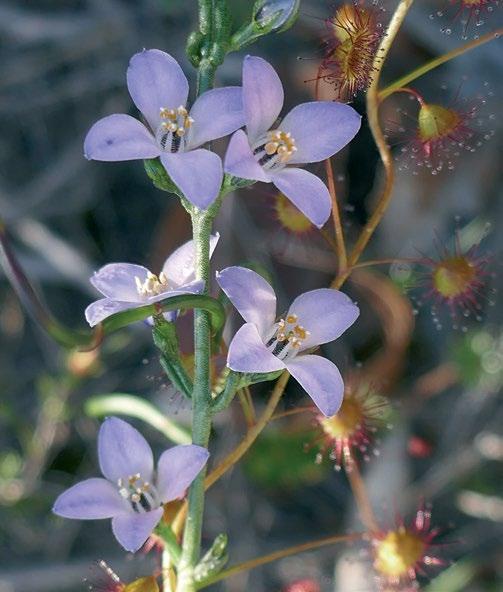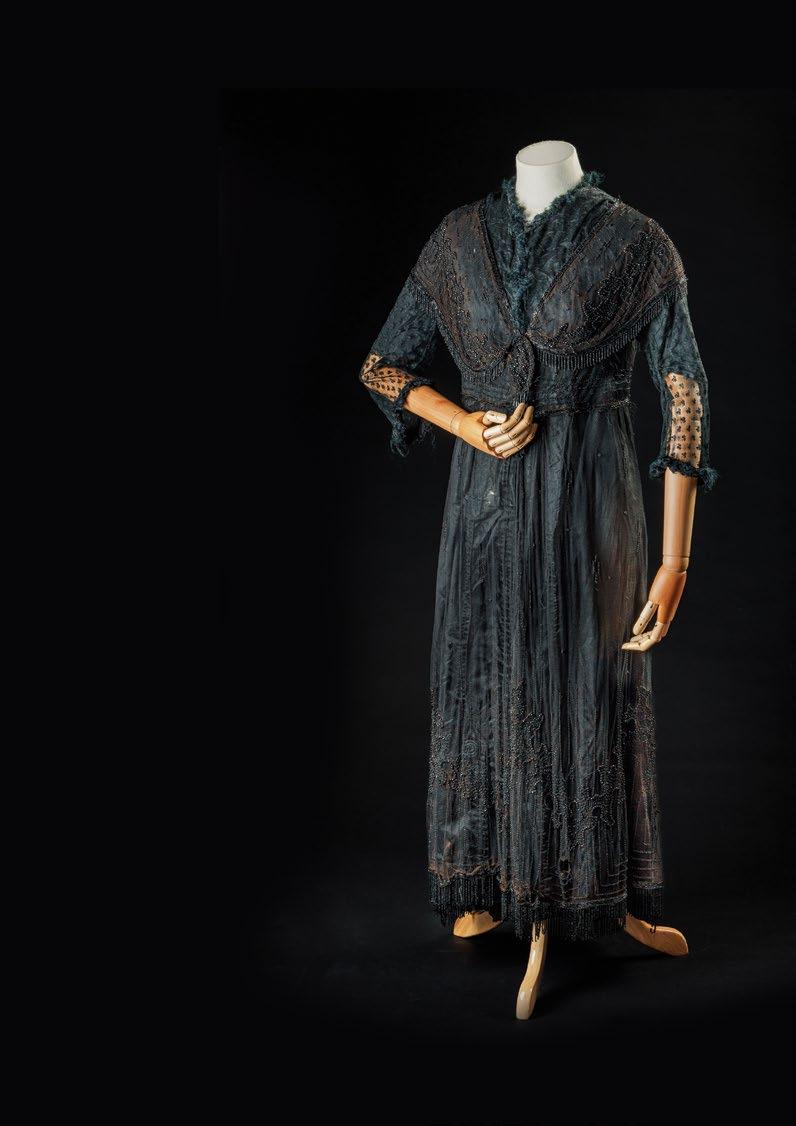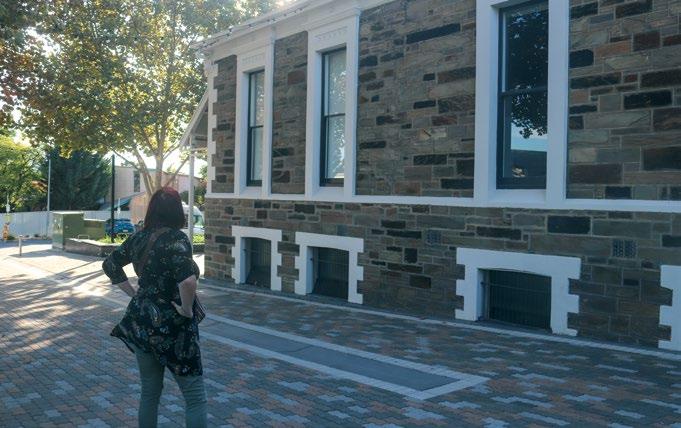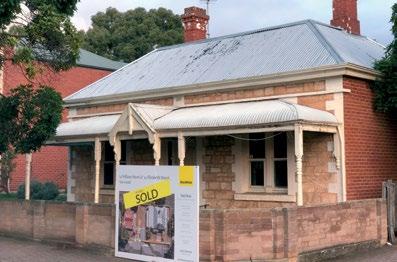
8 minute read
MOONTA MINES

Australia’s ‘little Cornwall’ set to shine on the world stage
Advertisement
The year 2023 marks the centenary of the closing of the world-famous Moonta Mines on the Yorke Peninsula. Over the past year the Trust has been working on a major conservation and tourism initiative with funding from the Commonwealth Government that will be completed and progressively opened to the public over the course of 2023. This work at the Moonta Mines National Heritage place is also positioning the site for nomination to the UNESCO World Heritage list in coming years.




50km Port Broughton

Port Wakefield
Adelaide The Moonta Mines site stands at the top of the Yorke Peninsula on the land of the Nharangga people. Nharangga country encompasses all of the Yorke Peninsula west of Port Broughton and Port Wakefield (see map left). While Nharangga people are known to have been present at Moonta Mines in the early years of mining and some were employed there, the creation of the Port Pearce Aboriginal Mission shortly after in 1868 initially attracted some 70 Nharangga people. The Point Pearce Mission was taken over by the State Government in 1915. Today, groups such as The Nharangga Aboriginal Progress Association (NAPA) are working to recover and share their language and cultural traditions. You can explore some the resources NAPA has created here: www.napainc.com.au
Moonta Mines holds a special place in Australia’s economic and cultural development and in the worldwide spread of Cornish culture and mining technology and skills. Copper mining took place at Moonta Mines between 1862 and 1923. One hundred years ago, mining ceased after more than 60 years. Over that period, two generations of miners, engineers and other skilled tradespeople not only created one of the most profitable mines in the world, but also shaped a distinctive cultural identity firmly founded in the traditions, beliefs and practices of their Cornish origins. In 1962 Moonta Mines born author, cartoonist and former miner Oswald Pryor coined the term ‘Australia’s Little Cornwall’ to describe the area of South Australia including Moonta, Wallaroo and Kadina, sometimes called the Copper Triangle or Copper Coast. This year, the centenary of the closure of the Moonta Mines, the National Trust is re-opening the Moonta Mines site as a major heritage tourism destination. With funding from the Commonwealth Government, we have invested in major conservation works on some of the key remaining mining structures and are creating new visitor experiences and amenities to develop the potential of Moonta Mines as one of the state’s premier heritage tourism sites. In this issue, we will introduce the Moonta Mines story and show what was achieved with the conservation works undertaken in 2022. Over the course of 2023, we will provide an update in each issue of Heritage Living about the new activities, events and amenities visitors to Moonta Mines can enjoy. As the works at Moonta are completed, we are also progressing the nomination for Moonta Mines, alongside Burra, as the pre-eminent Australian Cornish Mining Sites (ACMS) for world heritage recognition. The ACMS are proposed for world heritage listing as an extension of the listing of Cornish mining sites inscribed on the world heritage list in 2006. Nomination for world heritage listing is a complex and rigorous process administered by the United Nations Educational, Scientific and Cultural Organisation (UNSECO). The National Trust is working in partnership with the Copper Coast Council and Regional Council of Goyder to advance the world heritage nomination of the ACMS sites at Moonta and Burra.


Pictured opposite page: Centre: Richman’s Engine House. Top and bottom rows, Hughes Engine House. Left: Richman’s Engine House works. Opposite: Cartoonist Oswald Pryor was born at Moonta Mines in 1881. Pryor chronicled life on the mines in cartoon form from the age of 20, having begun work in the mines at the age of 13. A collection of his cartoons was published in 1961 when he was 80 years old and two more books followed including “Australia’s little Cornwall” (1962) before his death in 1971. His vivid and often humourous caricatures of life at Moonta Mines, like the one here, are a remarkable historical resource.

Top: By 1900 mining processes had been fully mechanised with industrialised infrastructure across the Moonta Mines. Hughes Engine House c.1910.
Moonta had its peak of production over the next twenty years into the 1880s. In 1880, Moonta was the largest settlement outside Adelaide, just as Burra had been in the 1840s. In the 1860s and 1870s the most significant structures were built including the Wesleyan Methodist Church (built 1865 and with an ultimate capacity of 1,200) and the Moonta Mines Model School (accommodating more than 1,000 students) built in 1878. These two buildings were among the largest buildings of their type in South Australia at the time and continue to impress today. Rapid industrialisation of the mines progressed at the end of the century and in 1900 new chemical technologies were introduced to extract copper from the accumulated heaps of crushed ore waste. However, a slump in copper prices after World War One had a rapid and fatal impact. The Wallaroo and Moonta Mining and Smelting Company went into liquidation in 1923 with some 2,000 workers losing employment. Most mines were soon abandoned and much of the equipment and infrastructure was dismantled or removed. It was the end of an era, one which had seen Moonta at the forefront of one of Australia’s first industrialised export enterprises and the global apogee of Cornish mining technology and traditions.


Hughes Engine House
The distinctive Cornish Engine Houses with their round chimney stacks are the dominant feature of the industrialised Cornish mining landscape. So too in Australia’s ‘little Cornwall’. In Wales, where there were more smelting works, they typically built square chimney stacks. It is said that the Cornish preferred a round design, without any corners to provide hiding places for evil spirits. One of the most important and now best-preserved Australian Engine Houses is the one at Moonta Mines known as Hughes Engine House. It was built early on in 1865 for the specific purpose of ‘dewatering’ the mines, that is removing water from the mine shafts. As the mines went deeper into the ground (up to 750 metres at Taylor’s Shaft) the water table rose and the shafts and miners were at constant risk of inundation. The famous steam driven Cornish beam engines underpinned the success of their deep, hard rock mining techniques. These powerful engines could be used to pump, haul and crush ore. Because of their importance the distinctive Engine Houses were carefully constructed to house these mechanical powerhouses. The 60-inch beam engine at Hughes kept the mine shafts on the Elder’s Line of Lode free of water. The beam action, with five strokes per minute, 24 hours a day, provided the mechanised heartbeat of the mines for almost 60 years. In 2022 Hughes Engine House, Chimney stack, Boiler House and Balance Bob were the first to receive much needed conservation works. Little work had been done on these masonry structures over the last 30 years, but they remain in generally good condition despite being more than 150 years old. The work involved extensive masonry works to clean, repoint and replace stone as necessary, with great care being taken to accurately match the original mortars as far as possible.

Above: National Trust President Paul Leadbeter at the launch of works event at Hughes Engine House. Right: Works at Hughes Engine House (left) and Richman’s Engine House (right).

Richman’s Engine House
Richman’s Engine House stands at the northern end of the Elder’s Line of Lode, the richest copper deposit at Moonta Mines. The need for an additional engine to crush and dress low-grade ore was identified by mine General Manger Captain Henry Richard Hancock in the late 1860s. A 32-inch beam engine was imported from Cornwall for the task and the Engine House, built with stone quarried from Moonta Beach, was completed in 1869. It was at Richman’s that the world famous ‘Hancock jig’ was first put into use. This invention, patented by Hancock, revolutionised the sifting of crushed ore using a rapidly moving screen in a tank of water to separate the heavier particles, generating much higher yields of copper. Conservation works at Richman’s Engine House completed in 2022 involved the replacement of the dilapidated roof and guttering and drainage systems and the fitting of stainlesssteel bird mesh on window openings to prevent bird entry. The roof has a new access system for maintenance purposes. In addition, a flagpole has been installed which can fly the Cornish flag – as well as others. Solar panels have been added to provide an energy system for interpretive installations and night time illumination. Stone and brick work has been repaired, repointed and replaced where necessary. A new public entry door has been installed which will provide access to an internal viewing platform.










